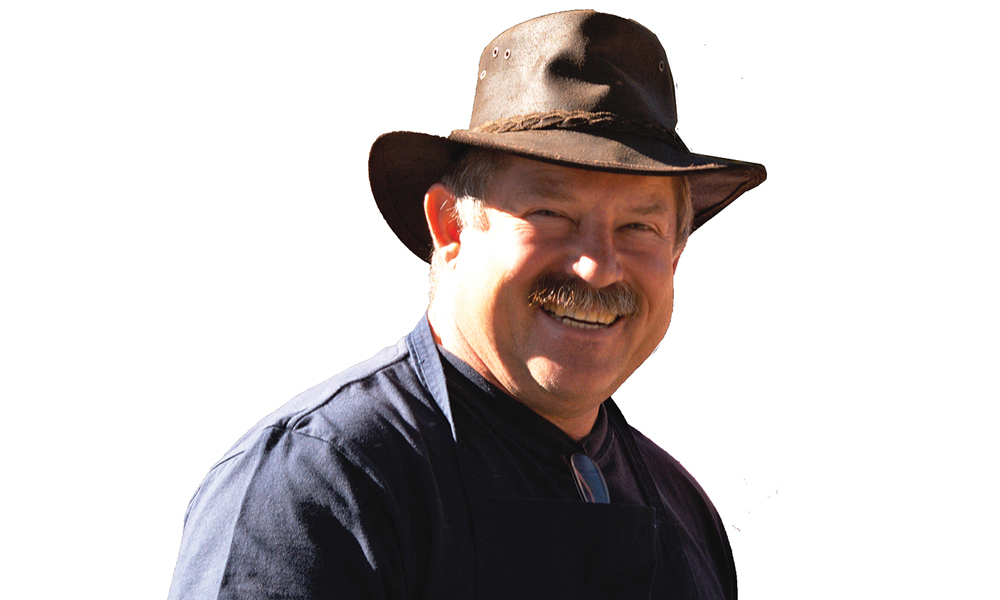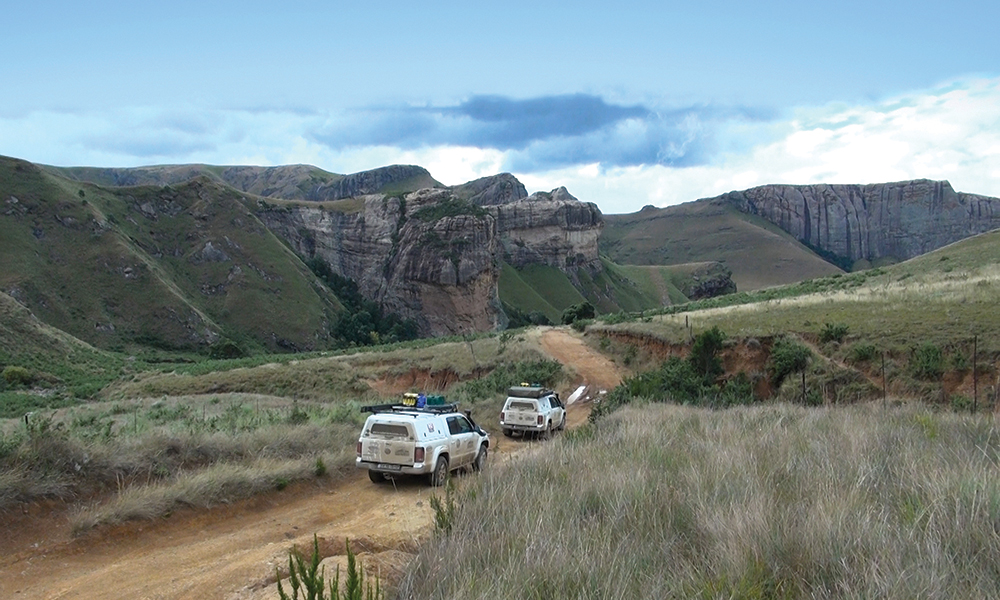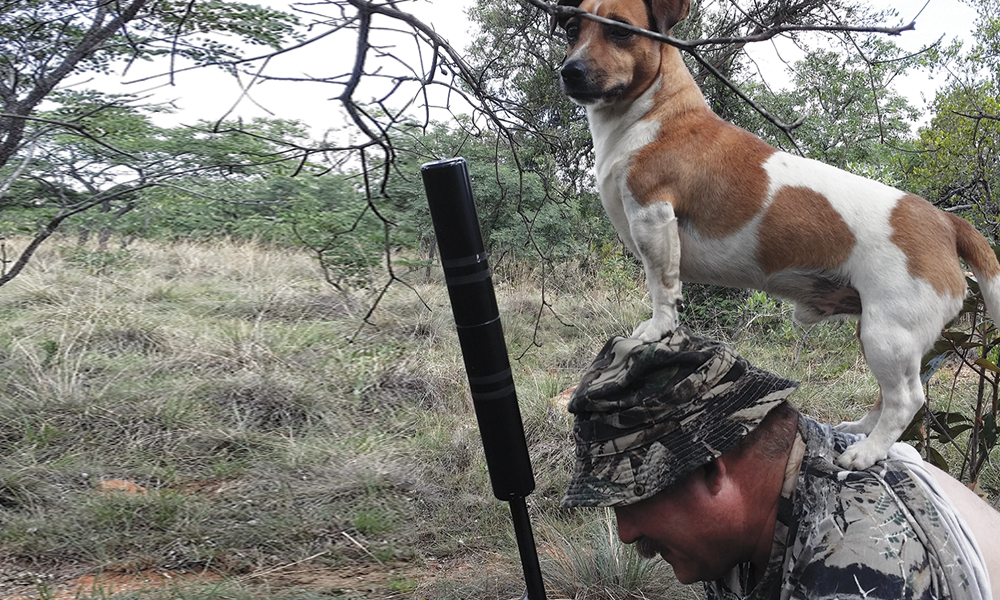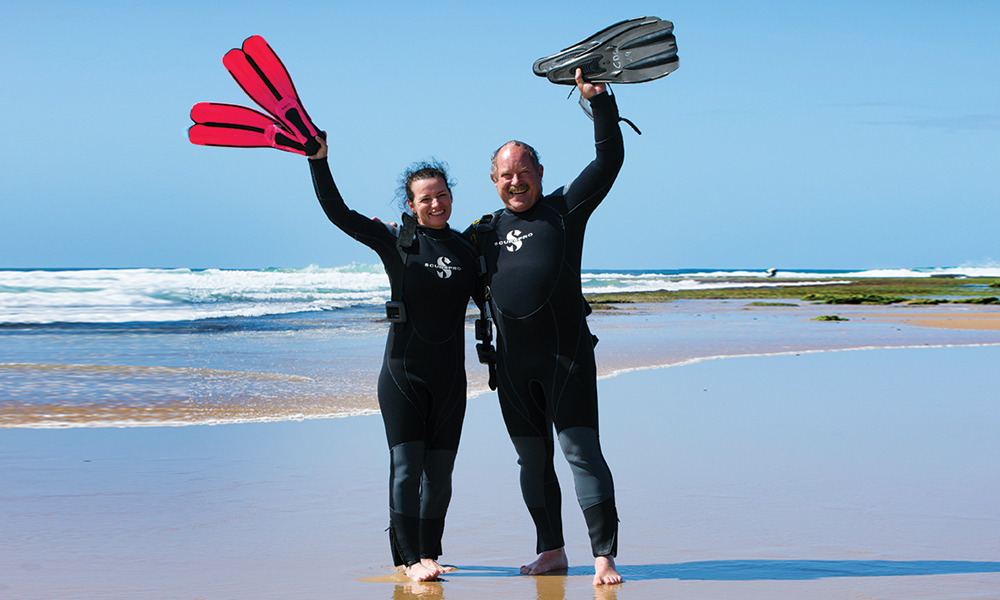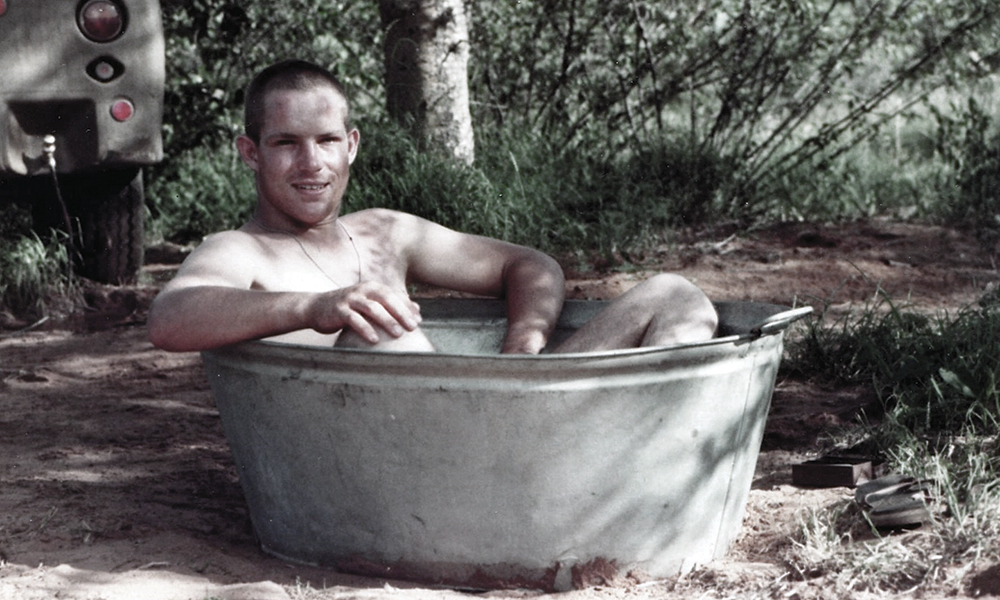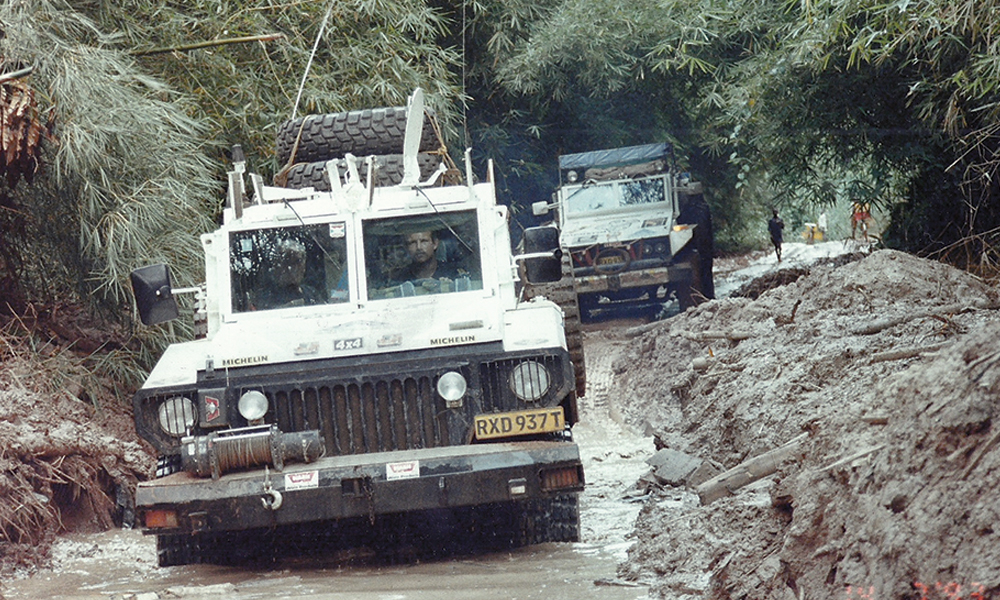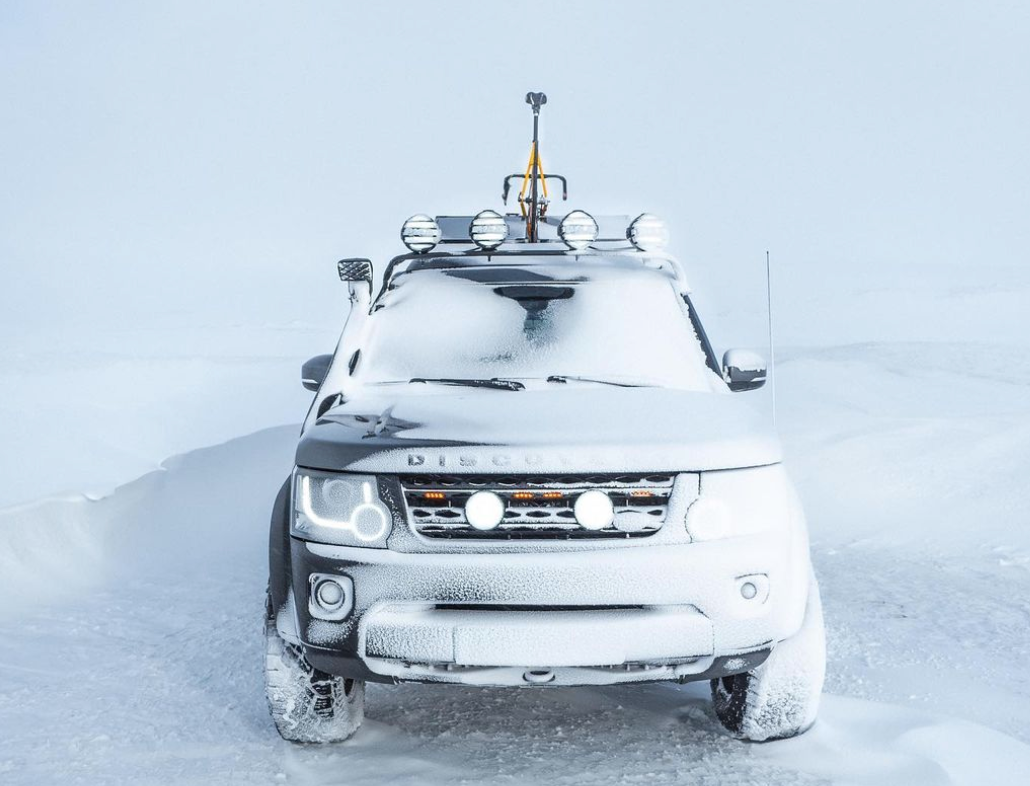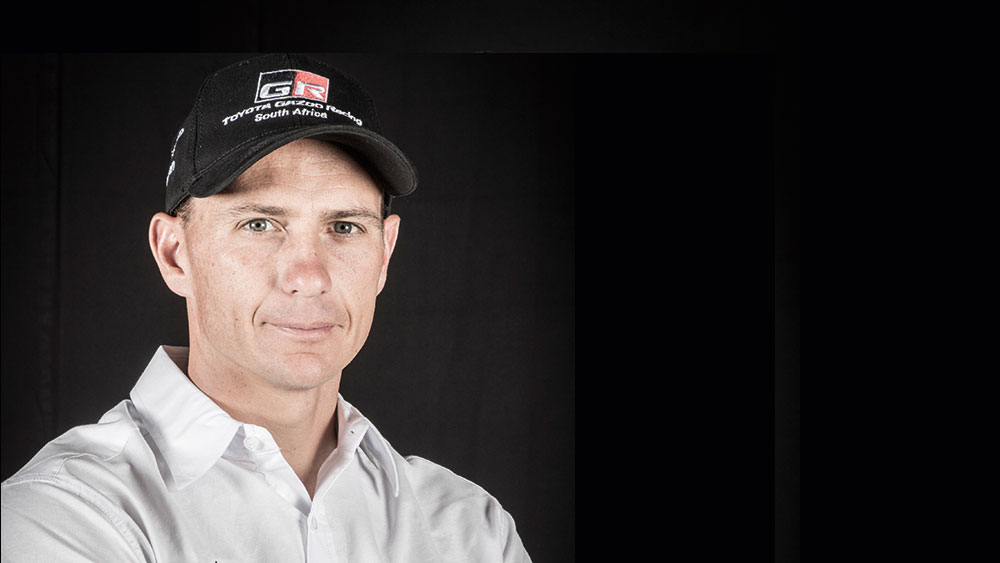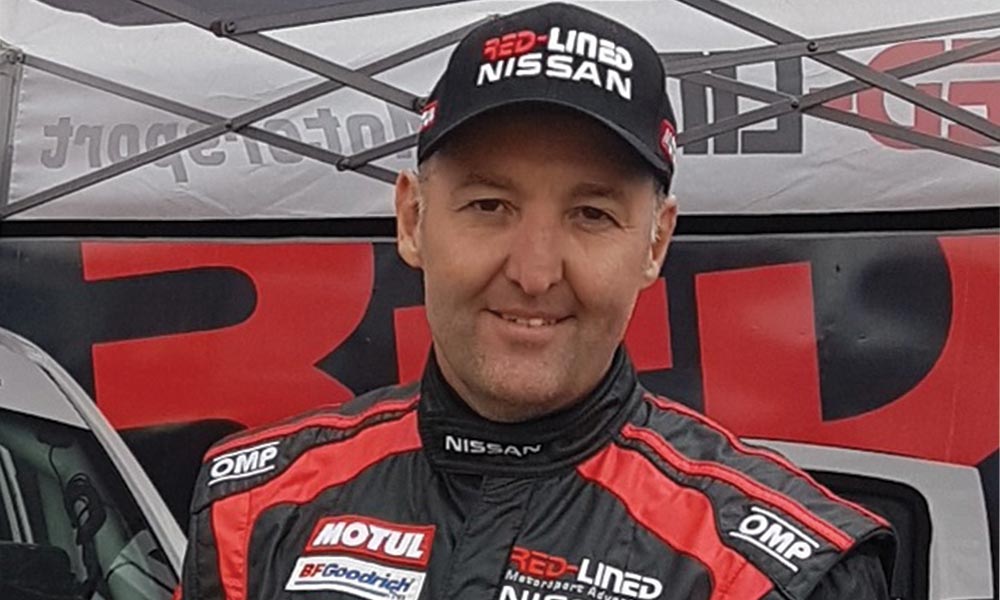André de Villiers drove his first 4×4 when he was 14 years old. Since then, he’s been an engineer, the boss of a 4×4 accessory group and a 4×4 television personality. This is his story.
When and in what did you learn to drive? And your first car?
In 1974, in a Valiant Regal, when I was 12 years old. My first wheels? A Honda SP50 bike, when I was 14. I didn’t have a licence, but I needed the bike to deliver newspapers so I could earn an income. After hours, I worked at a welding company and by 1978 I had saved enough money (R50) to buy a Mini 850cc. In time I completely rebuilt and restored it, and fitted a 1 350cc engine and close-ratio gearbox. Later I changed the Mini for a beach buggy. After school I bought a VW Golf GTS.
How did you get involved in the world of the 4×4?
My dad had a holiday home in Vleesbaai and I started driving on sand when I was 14. I was a keen fisherman so I used my dad’s Land Rover quite a bit on the beaches, as well as my own beach buggy. When I started working as a mechanical engineer, we did a lot of 4×4 testing in the armoured vehicles we designed and developed.
Tell us more about the armoured vehicles?
I started my career at Mercedes-Benz head office in 1987 but soon moved to TFM in Olifantsfontein, the company that manufactured the well-known Caspir military vehicle. I was tasked with putting together a new programme for a police armoured vehicle. This prototype vehicle was called the RG12 and later got the name Nyala. After TFM, I worked for Reumech Ermetek and designed various military vehicle projects including a command vehicle and later did the final production design of the Mamba vehicle that was based on the Unimog 416 driveline.
I also toured Africa with the first prototype Mamba vehicle in 1993. Later I was the head of the light armoured vehicles (LAV) division, so all the 4×4 vehicles. I needed to test all these vehicle designs thoroughly and so I did a lot of different vehicle tests in my career and I travelled all over Africa for this. Places like Riemvasmaak, Vastrap, Namibia and Gerotek vehicle testing facility as well as other parts of Africa.
Gerotek was at one stage like my home as it is important to test your designs. Different testing was done, like durability, a long distance test, top speed, acceleration, ride and handling, lane changes, suspension track, skidpan, wading, 4×4 driving, hill climb ability and so on. I also did a lot of research and testing on tyres and suspension as I believe it is one of the most important parts of a vehicle.
How did the stint with Safari Centre fit into your 4×4 picture?
Absolutely perfectly because I love the outdoors, 4×4ing, mechanical vehicle stuff and have a love to help people. I bought the first Safari Centre in Menlyn (Pretoria) and later took over the head office, buying the name, and built it into a very successful 4×4 chain store in South Africa with 14 branches. I sold the business in 2012.
And your current relationship with VW? How did that come about?
VW approached Safari Centre to be the importer and distributor of Seikel accessories. I realised the potential of this high quality product, and accessorised an Amarok for the 2011 Nampo show. Soon after I asked them if they would like to sponsor my television series Safari 4×4 Roetes with VW Amarok 4×4s and the contract was signed soon after. I’m now also an Amarok brand ambassador for VW Commercial Vehicles.
How did Safari 4×4 Roetes come about? And what are your plans for the future?
It was born in 2004. Since then we have made 130 episodes. I helped Petri de Wet years ago with a small sponsorship for his fishing programme Hier Gaan Ons Alweer and took him to Mozambique to train him on 4×4ing in the dunes. The first night around the campfire, I approached him and said that I would like to share my valuable 4×4 knowledge, my expertise and experience with the public via a TV programme. I’d love to carry on with the series for as long as the public wants me to share my knowledge.
Besides the programme, what else are you busy with these days?
Living my passion and helping people by sharing my years of 4×4 knowledge and experience with them via a training platform. I do corporate 4×4 training and team-building days and specialise in Amarok Expert training for VW. I also do vehicle comparative testing in the 4×4 category, and I’m involved in developing and testing 4×4 accessories for Seikel in Germany and the fitment of Seikel accessories in a state-of-the-art 4×4 workshop just outside Pretoria.
What is the most amazing place you’ve visited so far?
The southern parts of Africa with its different landscapes and beauty, the sea, sand dunes, deserts, wetlands, delta, rivers, mountains, forests and many more. The more I travel these terrains, the more I discover.
What recommendation would you give someone who has to decide between the whole 4×4 overland deal, versus a vacation in a hotel?
We all like a big screen TV, but the Kalahari television (bush fire) is far better and more exciting. So get off your office chair and go to the bush and camp with your entire family; it really is better in the bush than in a hotel.
If money was no object, what overland vehicle would you use to travel the world?
I’d go for what I reckon is the world’s coolest campervan, the VW 4Motion California Ocean fitted with the Seikel hub reduction system and final drive alterations for the gearbox. The California rolled out of the VW factory with a rooftop tent, fridge, dual battery systems, water, gas, two-plate stove, washbasin, tables and chairs. I have a 2008 California that we use for overlanding and the only vehicle I will ever swap it with is the latest California model.
In a (favourite) nutshell:
Food Medium rare rump steak with my wife’s braaibroodjie.
Drink A good red wine.
TV show Safari 4×4 Roetes. And CSI.
Sport Rugby and motorsport such as WRC and Le Mans 24 hour.
Movie I don’t do movies. My movie is through my Amarok’s windscreen. Band/singer Morning call of the birds in the bush.
Place on Earth On my boat on the sea, fishing.
Camping site A wild camp where there are more wild animals than people.
